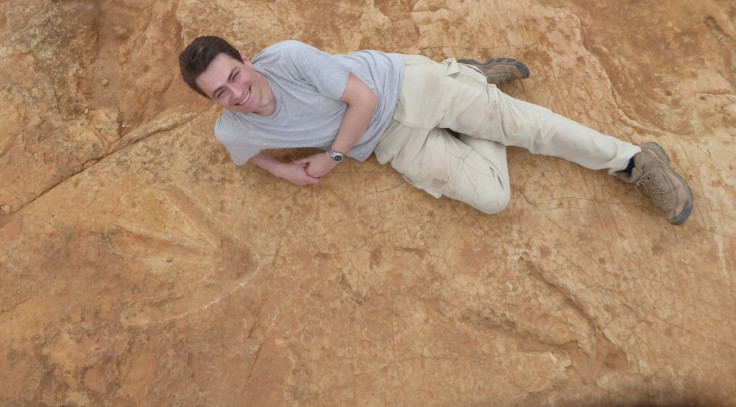'Mega-carnivore' dinosaur which roamed Africa 200 million years ago discovered
Kayentapus ambrokholohali belongs to the T-rex and velociraptor group and its footprints are 57cm long.

Evidence of a huge carnivorous dinosaur which roamed what is now southern Africa 200 million years ago has been uncovered by an international team of researchers.
Several three-toed footprints were found measuring 57cm long and 50cm wide, suggesting the dinosaur was around 9m (30ft) long and just less than 3m (10ft) tall at the hip. This would have made it four times the size of a fully-grown lion, the current largest carnivore in southern Africa.
The newly discovered dinosaur is a new species named Kayentapus ambrokholohali. It is part of a group of dinosaurs called theropods which includes Tyrannosaurus rex and velociraptor.
The study describing the findings is published in the journal PLOS ONE and was conducted by an international team of palaeontologists from theUniversity of Manchester, UK, the University of Cape Town, South Africa, and the Universidade de São Paulo, Brazil.
The tracks are the largest theropod footprints ever found in Africa, and were discovered on an ancient land surface – known as a palaeosurface – in the Maseru district of Lesotho. The palaeosurface is covered in 200-million-year-old 'ripple marks' and 'desiccation cracks' which indicates that the site had once been a watering hole or river bank.
"The latest discovery is very exciting and sheds new light on the kind of carnivore that roamed what is now southern Africa," said Fabien Knoll, from the University of Manchester.
"That's because it is the first evidence of an extremely large meat-eating animal roaming a landscape otherwise dominated by a variety of herbivorous, omnivorous and much smaller carnivorous dinosaurs. It really would have been top of the food chain."

The finding is significant because, until now, it was thought that most theropods that lived during the Early Jurassic period – from when the footprints date – were much smaller in size. It is only much later in the Jurassic and the beginning of the Cretaceous period – beginning around 145 million years ago – that large theropods, such as T. rex started to appear in the fossil record.
Lara Sciscio, from the University of Cape Town, said: "This discovery marks the first occurrence of very large carnivorous dinosaurs in the Early Jurassic of southern Gondwana - the prehistoric continent which would later break up and become Africa and other landmasses. This makes it a significant find. Globally, these large tracks are very rare. There is only one other known site similar in age and sized tracks, which is in Poland."
The palaeosurface where the footprints were found is also covered with the tracks of much smaller theropod dinosaurs.
Dr Knoll added: "In South Africa, Lesotho, Zimbabwe and Namibia, there is good record of theropod footprints from the Late Triassic and Early Jurassic epochs. In fact, there are numerous palaeosurfaces where footprints and even tail and body impressions of these, and other animals, can be found. But now we have evidence this region of Africa was also home to a mega-carnivore."





















